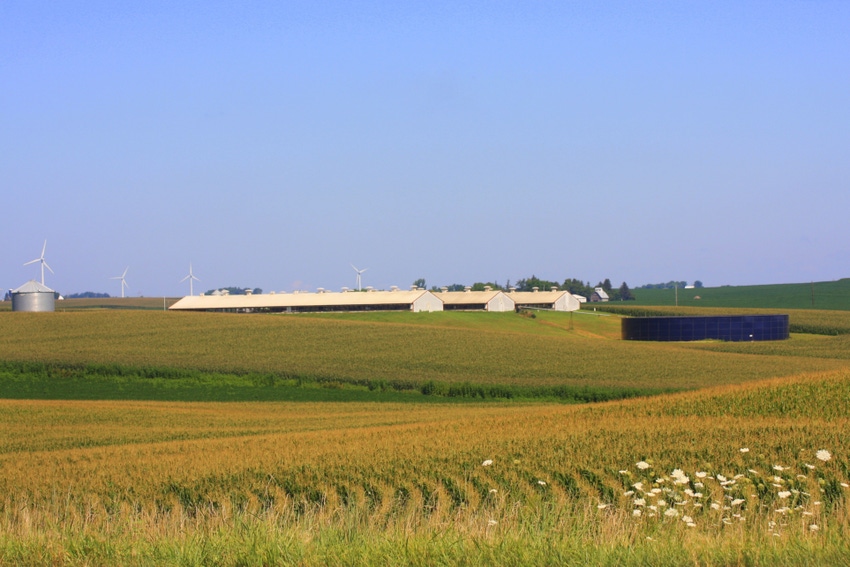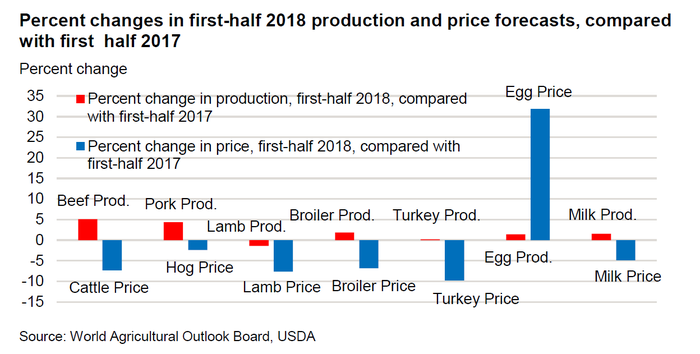Lower feed prices expected to aid animal product expansion.

With the exception of lamb and eggs, larger year-over-year animal product supplies and lower prices are expected during the first half of 2018, Mildred Haley, agricultural economist with the U.S. Department of Agriculture's Economic Research Service, reported in the latest “Livestock, Dairy & Poultry Outlook.”

For cattle, higher second-half 2017 cattle placements are expected to lead to higher first-half 2018 fed cattle marketings and seasonally higher (up 5.1%) beef production, she noted. First-half 2018 cattle prices are expected to be 7.3% below prices in the first half of 2017.
On the pork side, Haley said a projection for 4.3% higher pork production in the first half of 2018 derives mostly from expectations for larger pig crops in the second half of 2017. “Consequently, hog prices are expected to fall 2.4% below those in the first half of 2017,” she added.
For broilers, forecasts for higher producer returns will drive relatively small production increases. Haley said first-half broiler prices are projected to decline by 6.8%.
Turkeys are expected to show a modest recovery in domestic demand. In addition, Haley said exports will fuel small increases in production (up 0.24%). However, low prices will continue to underscore the slow pace of demand recovery relative to supply levels, she explained. First-half 2018 turkey prices are expected to fall 9.8%.
For eggs, Haley said prices in the first half of 2018 are expected to increase 17.7%, which reflects the year-earlier low prices that prevailed due to record supply levels. Production growth of 0.9% in the first half of 2018 is expected to be moderate as producers continue to recover from margins that were relatively low until recently, she said.
Milk production in the first half of 2018 is expected to increase by 1.6% over the first half of 2017, according to Haley. “Although milk prices are expected to decline from 2017 to 2018, relatively low feed prices are expected to encourage expansion of the milk cow herd and greater yield per cow, although at a slower rate than forecast last month,” she said.
First-half lamb production is projected to be lower (down 1.4%) due to expectations for reduced slaughter volumes that stem from a smaller 2017 sheep flock. At the same time, Haley said 7.7% lower lamb prices are the result of continued-large cold storage inventories, relatively high imports and lower prices of competing meats across the livestock and poultry complex.
About the Author(s)
You May Also Like

.png?width=300&auto=webp&quality=80&disable=upscale)

